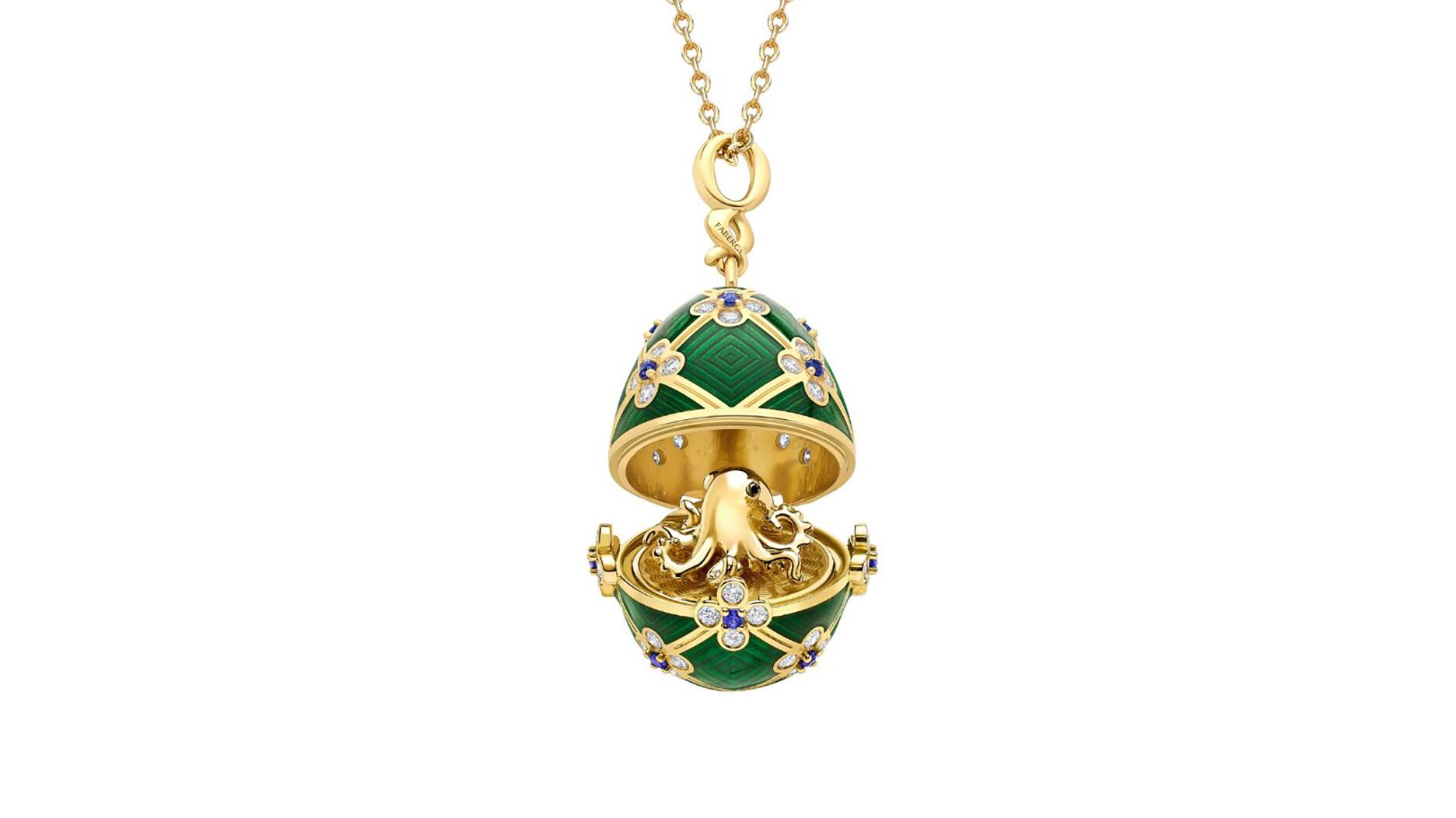The new pink sapphire version of the piece dances with its wearer in the brand’s “Icons After Dark” holiday campaign.
Socially Engineered Shipping Scheme Hits Jewelry Industry
The perpetrators are mining information from company websites and Facebook in order to appear legitimate when placing fraudulent orders for high-end items, the JSA warns.
New York--A group of perpetrators are calling jewelry companies and faking their identities in order to trick them into shipping out high-end items, the Jewelers Security Alliance said in a special alert issued late last week.
JSA President John J. Kennedy said that while the exact number of perpetrators is unknown, the shipping scam is the work one of one fairly large singular group believed to be operating in the United States and targeting jewelry firms in the Northeast and Southeast.
He said that both suppliers and retailers are potential victims, with the perpetrators using what’s called social engineering to try to fool their victims into shipping out high-end merchandise.
Social engineering is defined as the use of deception to manipulate individuals to divulge confidential or personal information that may be used for fraudulent purposes. In May of this year, the FBI released a public service announcement about social engineering being used in business email compromise attacks, which cost businesses globally more than $5 billion between October 2013 and December 2016.
But, electronic contact is not part of the current scam that’s impacting jewelers and suppliers, Kennedy said.
Instead, the perpetrators are using the phone, calling suppliers pretending to be jewelers, or targeting multi-store retail chains posing as a store manager or employee of another branch.
They will contact the retail store or supplier with a great deal of knowledge about the company, like names of employees, shipping procedures, inventory in stock and SKU numbers.
While some of the information is obtained via phone calls made prior, much is mined from the internet, including the store’s website and the social media profiles of the business owner and his or her employees.
Then the perpetrator will ask for the supplier or store to ship certain high-end items--Kennedy said mainly large diamonds and high-value watches--overnight, with the goal of diverting the package en route by changing the shipping address to an address of their choice.
Sometimes when the fraud is being committed at a multi-store retail chain, the perpetrator will give an address that he or she claims belongs to a customer or salesperson and asks for the item to be sent there instead of the store.
Kennedy said while he has seen this type of fraud before, he has never seen it happening at the level it is right now.
There have been about a dozen attempts in the last two weeks
“We are putting this out now because we see it as rampant,” Kennedy said of the alert the JSA issued Friday.
He said that the amount of information now available on the internet is a “very large” contributor to criminals’ ability to socially engineer scams today.
And while Kennedy acknowledges that businesses need to be present on the internet to market themselves today, he says jewelers should carefully consider each piece of information that goes online.
“I feel jewelers are putting far too much information out online,” he said. “The more you put out there, the more you are at risk.”
The JSA has five additional recommendations for jewelers and suppliers to help them avoid becoming a victim of this shipping scheme.
1) Employees need to confirm to whom they are speaking. If someone is on the line whom the employee does not know, he or she should excuse themselves immediately and say they will have to call them back. Employees also can call back after the order or request is made to confirm that it’s legitimate.
Either way, the employee should not use the number given to them by the caller and, instead, call the actual phone number of the business, obtained via Google or elsewhere.
2) Be wary of calls that come from blocked or “unknown” numbers.
3) Alert employees that they should not be fooled into giving out inappropriate information to callers asking questions about personnel or procedures. The perpetrators want to find out as much as they can about a supplier or retailer in order to sound legitimate.
4) Strictly limit the procedures that allow for a change of address on shipments. For example, some firms have only one person who can authorize a change of address or have told the shipping company that all packages on which an address change is attempted should be returned to them.
5) Kennedy also recommended Monday that jewelers or suppliers never give out tracking numbers for packages they are shipping.
The Latest

A choice that’s generated a lot of commentary, Pantone says “Cloud Dancer” marks a fresh start and encourages relaxation and creativity.

The manufacturer’s holiday campaign features a gift guide filled with trending designs and jewelry that can be personalized.

How Jewelers of America’s 20 Under 40 are leading to ensure a brighter future for the jewelry industry.

The Florida independent expanded its store from 8,000 to 14,000 square feet, fulfilling the vision of its late co-founder, Jim Dunn.


Sponsored by De Beers Group

The classic 5600 series G-Shock has been scaled down to about a tenth of its size, becoming a fully functioning watch ring.

Roseco’s 704-page catalog showcases new lab-grown diamonds, findings, tools & more—available in print or interactive digital editions.

The association’s annual conference and gala will take place Feb. 4, 2026, during the Tucson gem shows.

The January show will include a workshop for jewelry retailers on implementing AI to strengthen their businesses.

Fellow musician Maxx Morando proposed to the star with a chunky, cushion-cut diamond ring designed by Jacquie Aiche.

The retailer, which sells billions in fine jewelry and watches, is suing the Trump administration and U.S. Customs and Border Patrol.

Black Friday is still the most popular shopping day over the five-day holiday weekend, as per the National Retail Federation’s survey.

The historic egg, crafted for Russia's ruling family prior to the revolution, was the star of Christie’s recent auction of works by Fabergé.

The retailer offered more fashion jewelry priced under $1,000, including lab-grown diamond and men’s jewelry.

The eau de parfum is held in a fluted glass bottle that mirrors the decor of the brand’s atelier, and its cap is a nod to its “Sloan” ring.

Vivek Gadodia and Juan Kemp, who’ve been serving as interim co-CEOs since February, will continue to lead the diamond mining company.

In addition, a slate of new officers and trustees were appointed to the board.

Witt’s Jewelry in Wayne, Nebraska, is the organization’s new milestone member.

Laurs is the editor-in-chief of Gem-A’s The Journal of Gemmology and an expert on the formation of colored gemstone deposits.

The single-owner collection includes one of the largest offerings of Verdura jewels ever to appear at auction, said Christie’s.

Michael Helfer has taken the reins, bringing together two historic Chicago jewelry names.

The guide features all-new platinum designs for the holiday season by brands like Harwell Godfrey, Ritani, and Suna.

During its Q3 call, CEO Efraim Grinberg discussed the deal to lower tariffs on Swiss-made watches, watch market trends, and more.

Rosior’s high jewelry cocktail ring with orange sapphires and green diamonds is the perfect Thanksgiving accessory.

The “Embrace Your True Colors” campaign features jewels with a vibrant color palette and poetry by Grammy-nominated artist Aja Monet.

Luxury veteran Alejandro Cuellar has stepped into the role at the Italian fine jewelry brand.

























